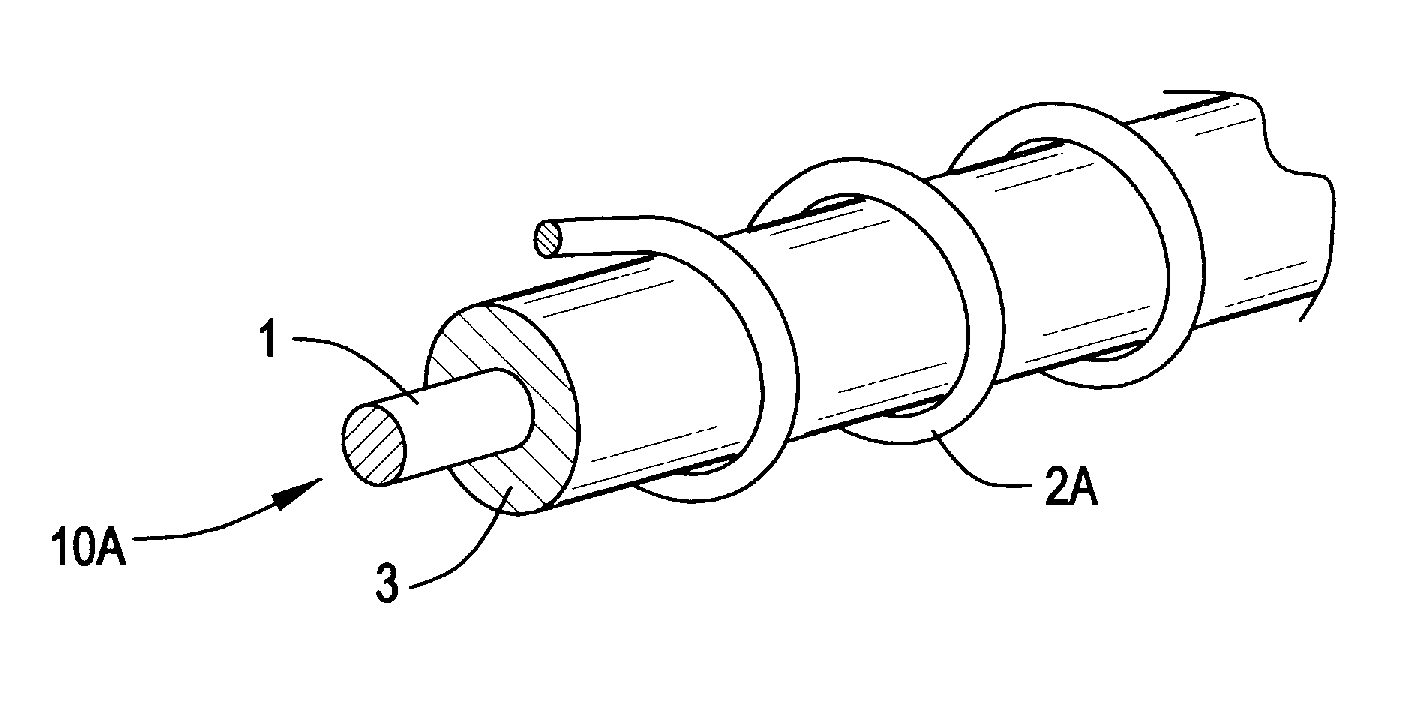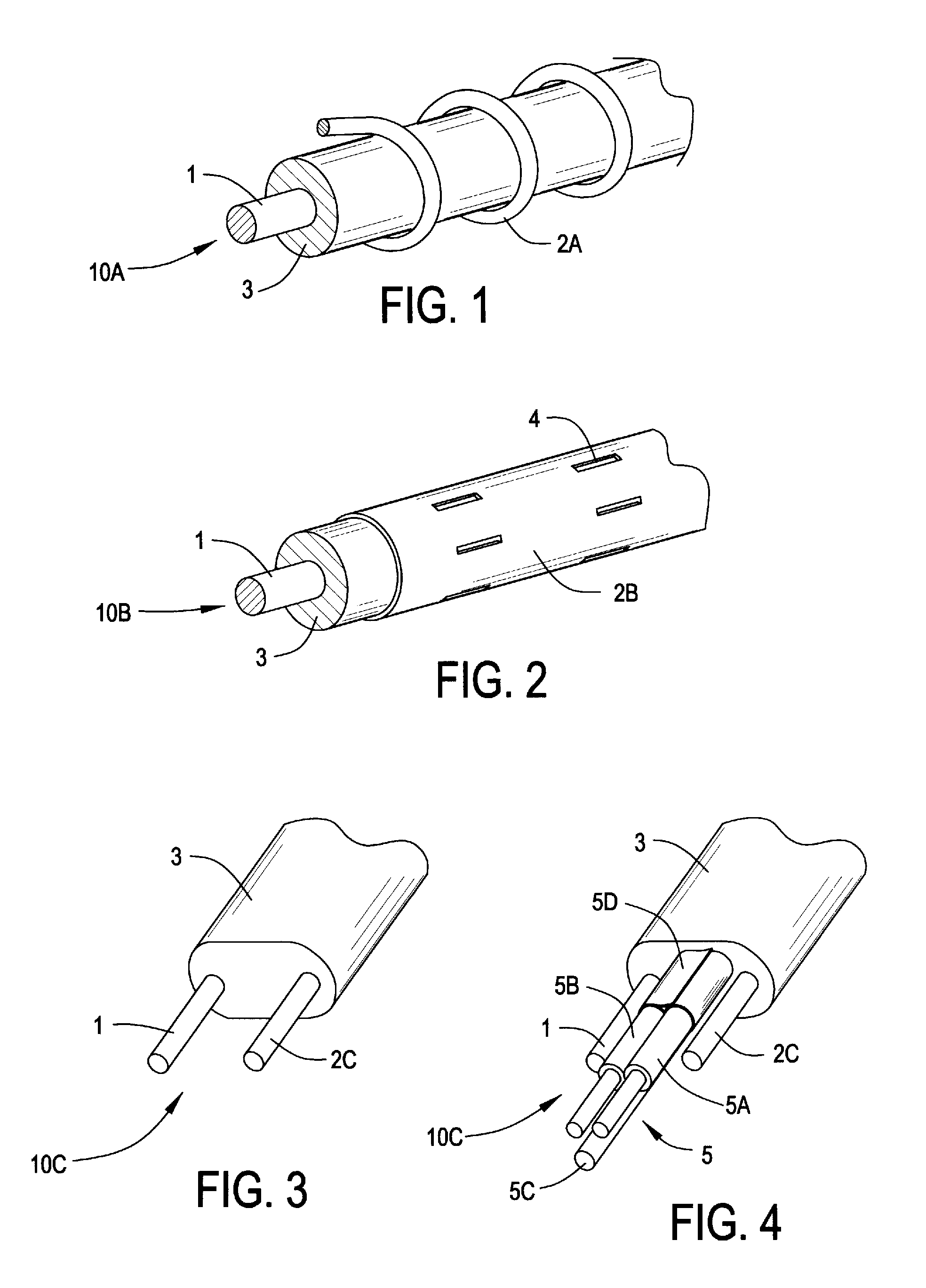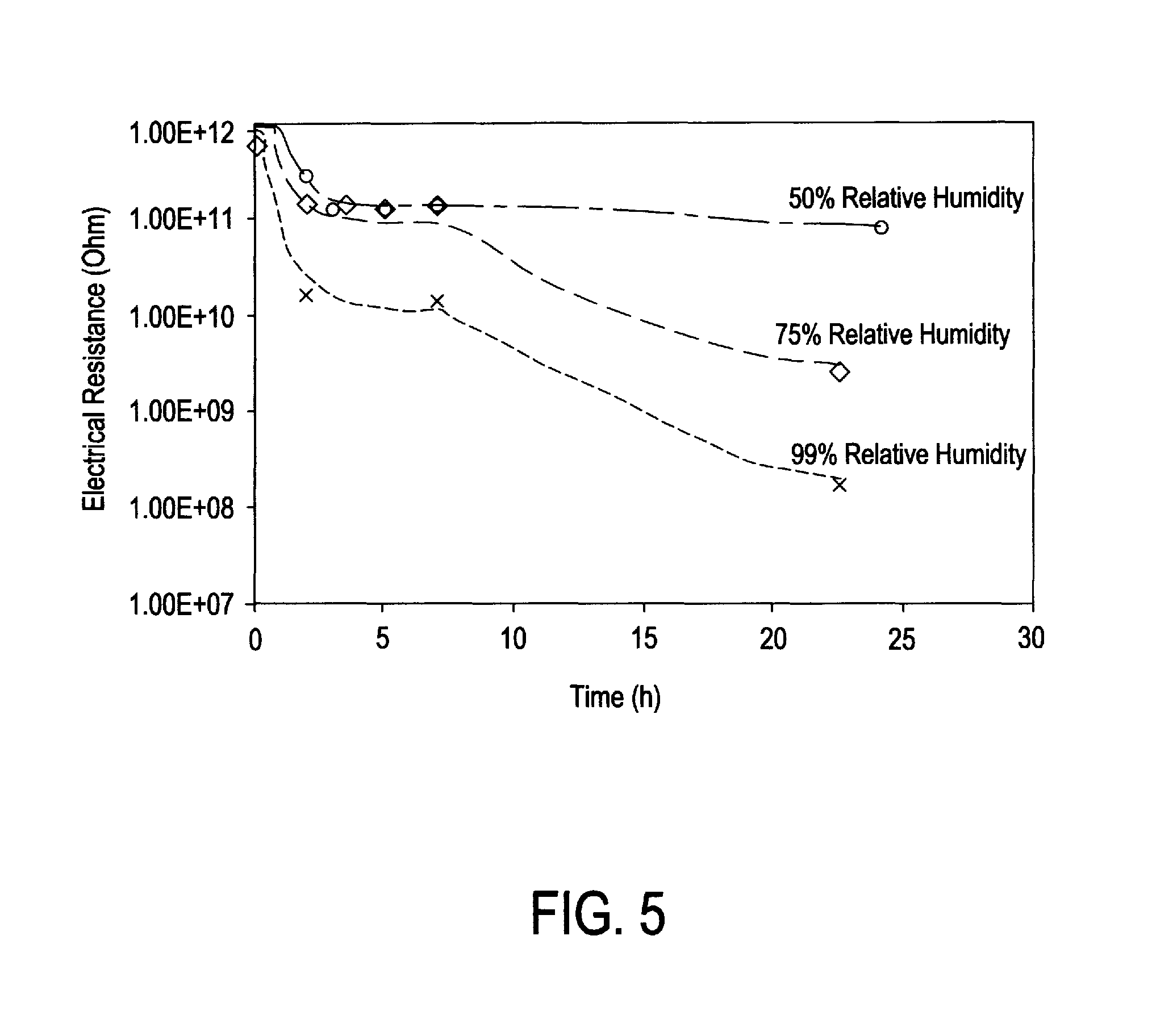Electrical device for detecting moisture
a technology of electric devices and moisture, applied in the direction of weighing by absorbing components, material thermal analysis, structural/machine measurement, etc., can solve the problems that the prior art electric devices cannot be used more than once, and the cost of such a device ultimately proves to be relatively high in relation to its use, so as to achieve less temperature sensitive and easy to implement
- Summary
- Abstract
- Description
- Claims
- Application Information
AI Technical Summary
Benefits of technology
Problems solved by technology
Method used
Image
Examples
examples
[0079]A detection cable as depicted in FIG. 3 is produced using two copper wires of 1.5 mm2 cross section laid parallel to one another in a first example of non-soluble and moisture-sensitive polymer material, the distance between the two copper wires being kept constant at 1 mm. The thickness of the layer of polymer material covering the two wires is also 1 mm. Said polymer material, which is extruded around these two copper wires, is made up of:[0080]an ethylene vinyl acetate copolymer containing 28% of vinyl acetate groups, marketed by Exxon Mobil under the reference Escorène UL 0328, and[0081]approximately 150 parts by weight of an inorganic desiccant filler as anhydrous calcium sulfate marketed by WA Hammond Drierite LTD under the reference Drierite.
[0082]The detection cable thus obtained is 5 meters long. The two copper wires of one of the ends of the detection cable are connected to a megohmmeter to measure the electrical resistance between the two copper wires. The detection...
PUM
| Property | Measurement | Unit |
|---|---|---|
| distance | aaaaa | aaaaa |
| thickness | aaaaa | aaaaa |
| temperature | aaaaa | aaaaa |
Abstract
Description
Claims
Application Information
 Login to View More
Login to View More - R&D
- Intellectual Property
- Life Sciences
- Materials
- Tech Scout
- Unparalleled Data Quality
- Higher Quality Content
- 60% Fewer Hallucinations
Browse by: Latest US Patents, China's latest patents, Technical Efficacy Thesaurus, Application Domain, Technology Topic, Popular Technical Reports.
© 2025 PatSnap. All rights reserved.Legal|Privacy policy|Modern Slavery Act Transparency Statement|Sitemap|About US| Contact US: help@patsnap.com



